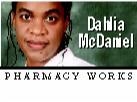
When I was little, many of the elderly people I knew were toothless. I actually thought that losing teeth was a natural part of ageing. It is not. If we care our gums and teeth, we can grow old and keep our own teeth. The health of our teeth and gums may have a significant effect on our overall health. Some studies have shown an 'oral-systemic disease connection' - an association between diseases of the teeth and gums and systemic conditions like heart disease, diabetes and pneumonia.
The problems with teeth
At the root of many of our oral/ dental problems is bacteria. The oral challenges we face include:
Cavities, that is decayed areas on the tooth.
Gingivitis - the early stage of periodontal (gum) disease. With gingivitis we have swollen, bleeding gums. Bleeding is obvious when we brush normally. (You will see pink in the sink.)
Periodontal disease (periodontitis) - infection of the gum and bones which support the teeth.
Regular smoking and consumption of hard liquor and sugary, starchy foods facilitate all of the above. If untreated, the end results of these challenges are persistent bad breath, toothache and sensitive roots, loose teeth and tooth loss, and possibly systemic conditions like heart disease.
Be gentle
Regular, gentle brushing with a soft toothbrush removes some bacteria, food particles and acids. Frequent flossing clears out the crud which forms between teeth, and in between teeth and gums. Regular visits to the dentist achieve both and facilitate early detection of tooth challenges. The dentist views stagnated areas better than we can, and removes calculus (tartar), which we cannot do effectively at home.
What consumers want
The tag-lines on oral health products illustrate what we want from them: 'fresher breath for 12 hours', 'deep action', 'ultimate white', 'fresh-breath confidence, 'kills bad-breath germs', 'tartar control', 'advanced cavity protection', 'fights cavities on teeth and roots', 'recharge your smile', 'prevents plaque, gingivitis and bad breath'.
What's in toothpaste and mouthwash?
Here are some ingredients in popular toothpastes and mouthwashes:
Fluoride (sodium fluoride or sodium mono-fluorophosphate) - penetrates enamel to make it resistant to cavities.
Potassium nitrate - may decrease painful sensitivity of teeth.
Calcium carbonate or silica - mild abrasive which works to remove plaque.
Dicalcium phosphate dehydrate - material which helps polish teeth.
Cetylpyridinium Chloride - antiseptic which kills some bacteria.
Sodium lauryl sulphate - foaming agent used also in bubble bath, shampoos, shaving creams, and floor cleaners for its thickening and lathering effect. This ingredient may cause allergic reactions, irritation and sores in the mouth.
Thymol - essential oil which has some antibacterial activity.
Methyl salicylate - an antiseptic.
Eucalyptol - flavouring and local anaesthetic.
Chlorhexidine - antiseptic and disinfectant which kills bacteria, viruses and fungi and inhibits plaque formation. With prolonged use, it may stain teeth.
Hydrogen peroxide - froths when in contact with oral debris producing a mechanical cleansing effect. Dilute well with water to prevent staining of the teeth.
Alcohol - since alcohol is a drying agent, mouthwashes which contain alcohol may worsen bad breath.
Dahlia McDaniel is a pharmacist and final year doctoral candidate in public health at the University of London; email: yourhealth@gleanerjm.com.

A great smile is equally as important as fresh breath.